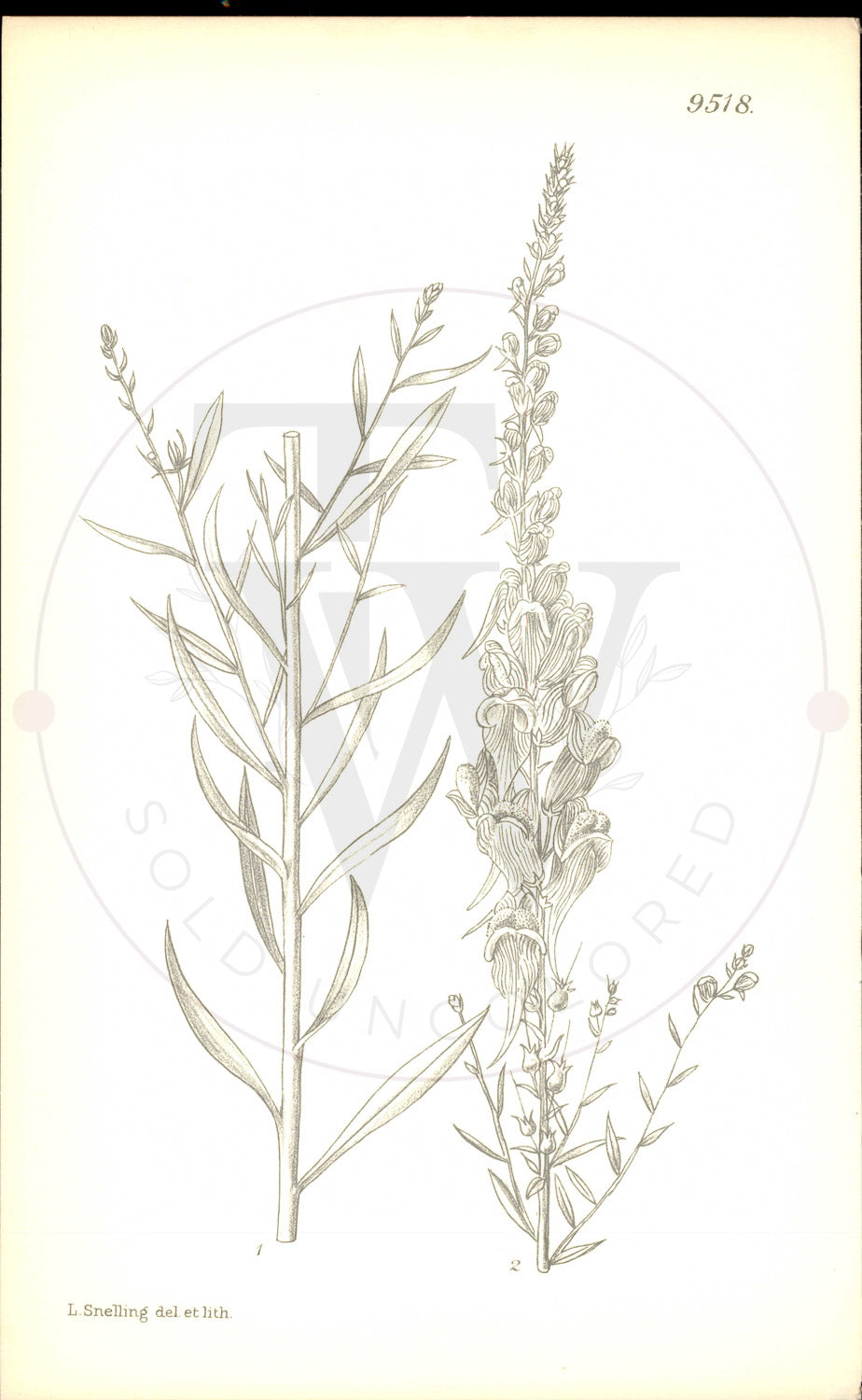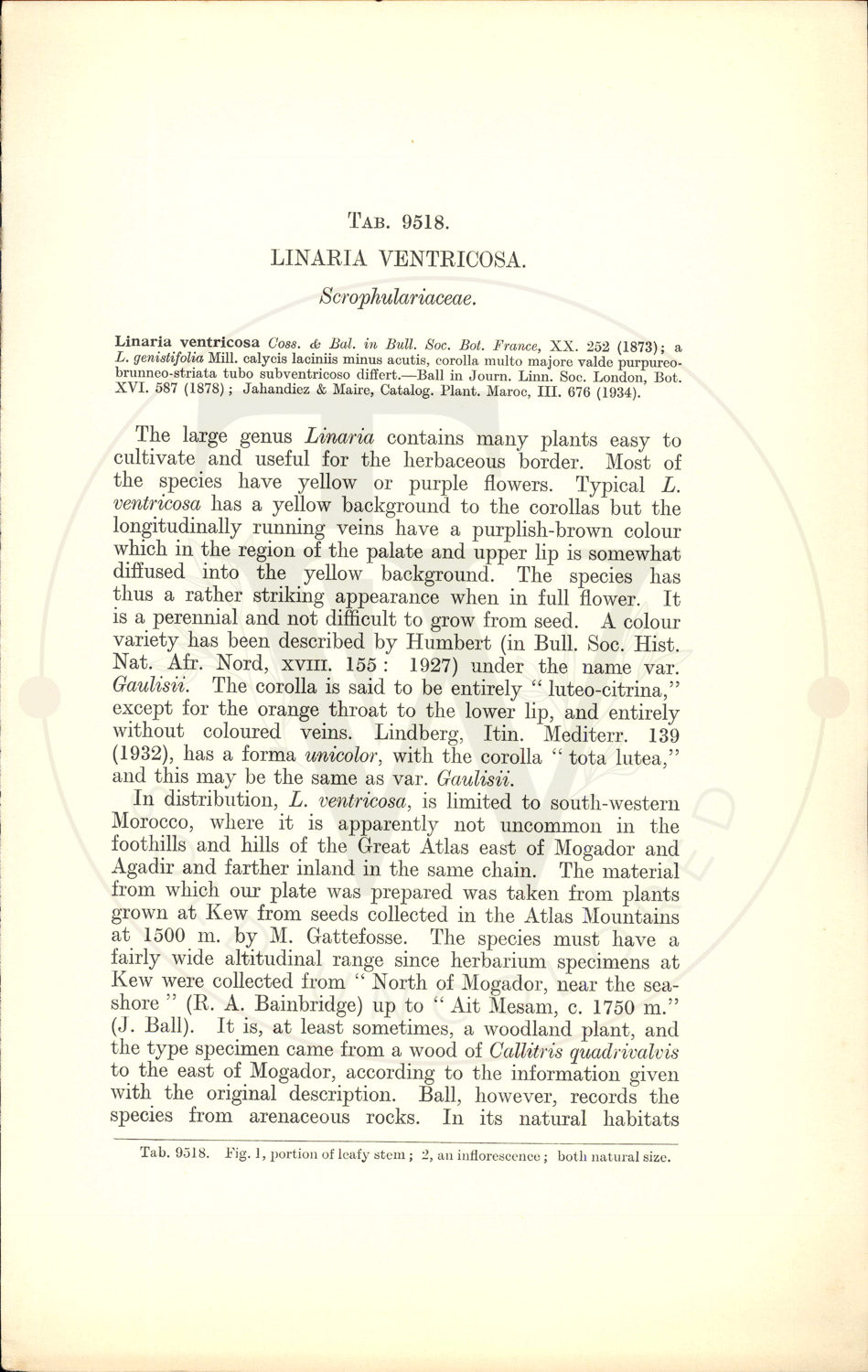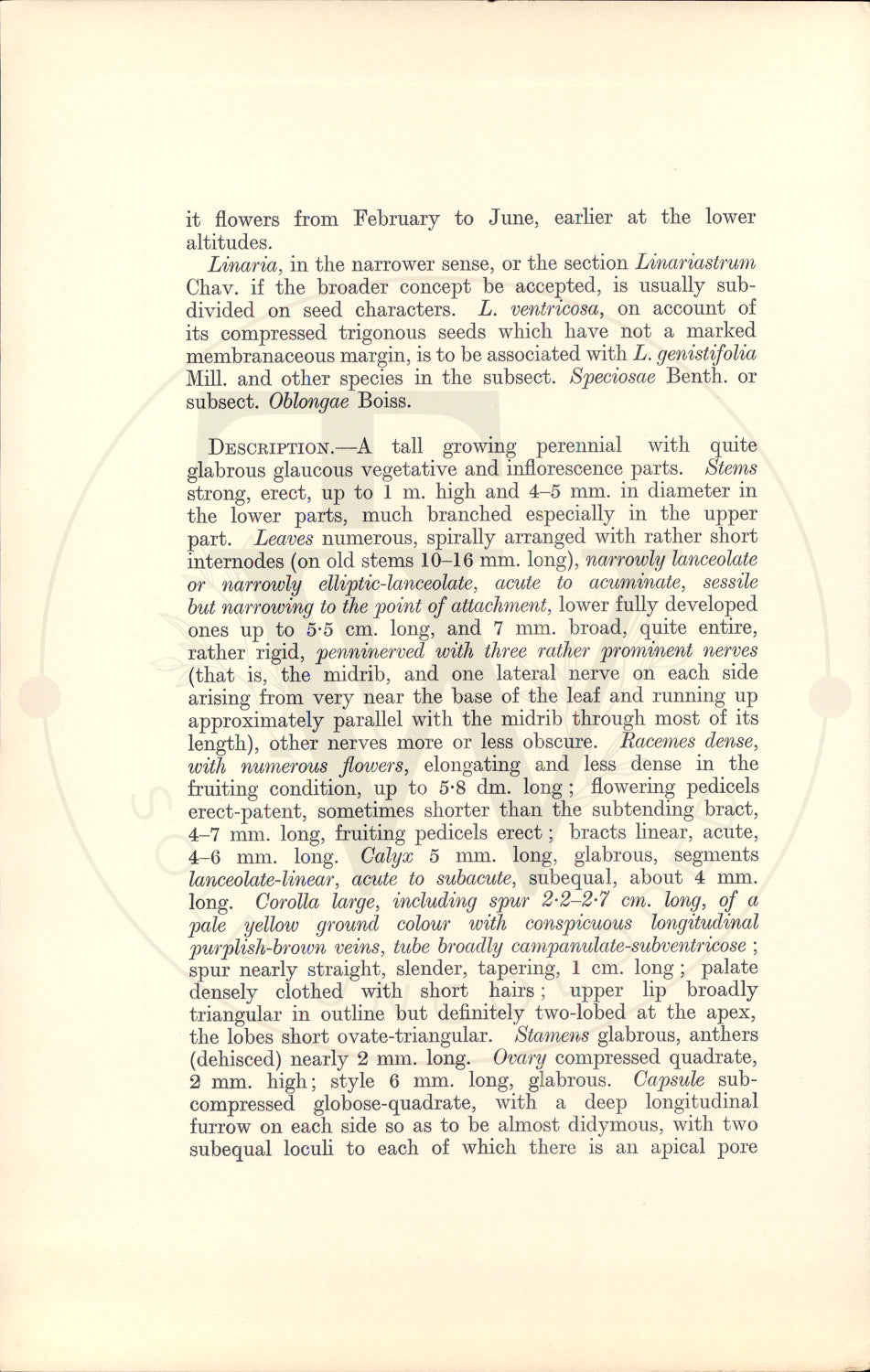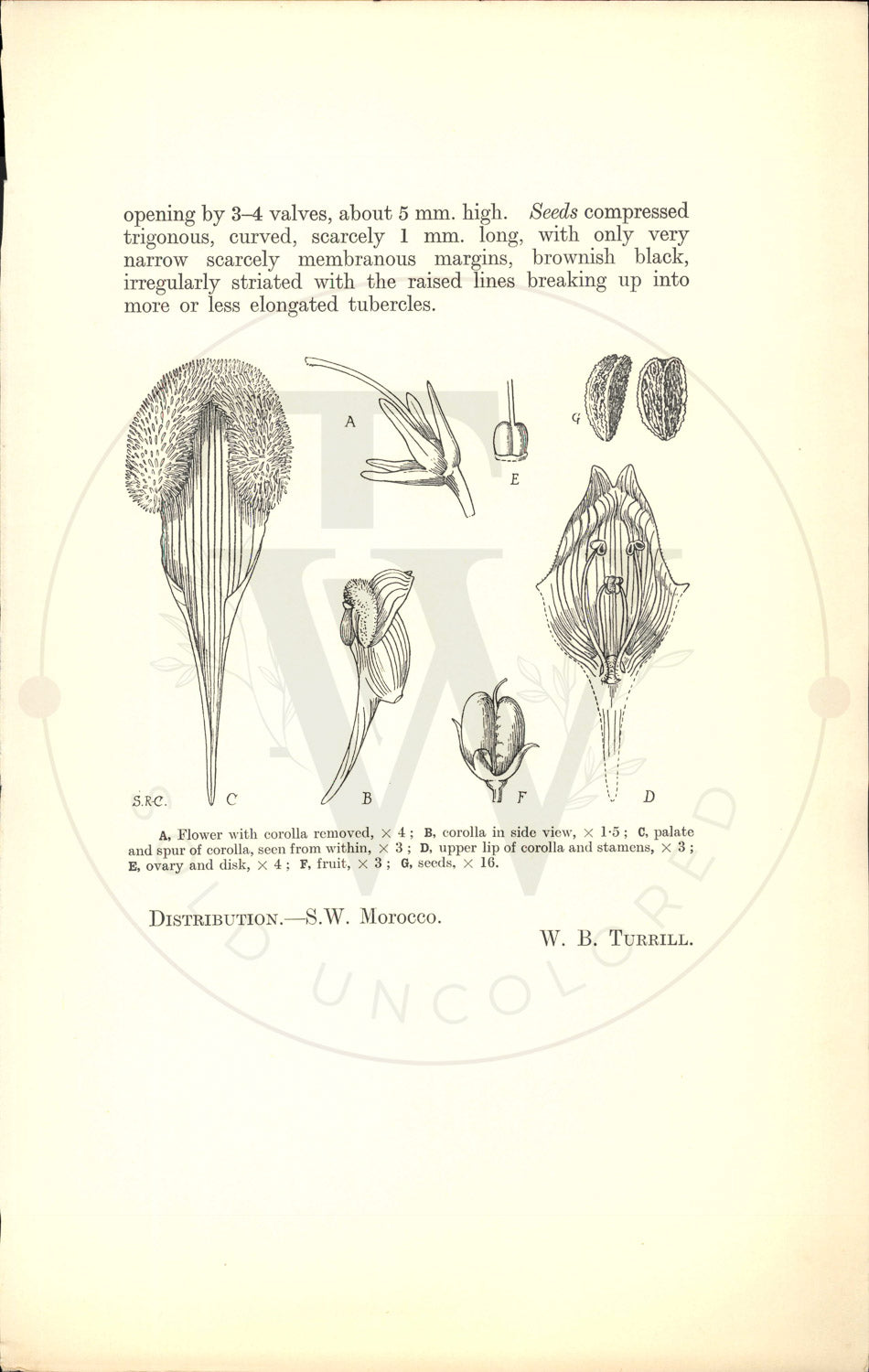Curtis Botanical Magazine
Plate 9518 - Linaria ventricosa
Plate 9518 - Linaria ventricosa
Couldn't load pickup availability
Curtis's Botanical Magazine - Plate 9518
Linaria ventricosa
Family: Scrophulariaceae • Native Region: France • Publication Date: January 1st, 1934
Distribution: , L • Tab Author: W. B. TURRILL
Botanical Description
XVI. 587 (1878); Jahandiez & Maire, Catalog. Plant. Maroc, III. 676 (1934). The large genus Linaria contains many plants easy to cultivate and useful for the herbaceous border. Most of the species have yellow or purple flowers. Typical L. ventricosa has a yellow background to the corollas but the longitudinally running veins have a purplish-brown colour which in the region of the palate and upper lip is somewhat diffused into the yellow background. The species has thus a rather striking appearance when in full flower. It is a perennial and not difficult to grow from seed. A colour variety has been described by Humbert (in Bull. Soc. Hist. Nat. Afr. Nord, XVIII. 155: 1927) under the name var. Gaulisii. The corolla is said to be entirely "luteo-citrina," except for the orange throat to the lower lip, and entirely without coloured veins. Lindberg, Itin. Mediterr. 139 (1932), has a forma unicolor, with the corolla tota lutea," and this may be the same as var. Gaulisii. In distribution, L. ventricosa, is limited to south-western Morocco, where it is apparently not uncommon in the foothills and hills of the Great Atlas east of Mogador and Agadir and farther inland in the same chain. The material from which our plate was prepared was taken from plants grown at Kew from seeds collected in the Atlas Mountains at 1500 m. by M. Gattefosse. The species must have a fairly wide altitudinal range since herbarium specimens at Kew were collected from 66 North of Mogador, near the sea- shore" (R. A. Bainbridge) up to "Ait Mesam, c. 1750 m. (J. Ball). It is, at least sometimes, a woodland plant, and the type specimen came from a wood of Callitris quadrivalvis to the east of Mogador, according to the information given with the original description. Ball, however, records the species from arenaceous rocks. In its natural habitats.
About This Print
Original black and white uncolored botanical print from Curtis's Botanical Magazine (established 1787). This 9000s series print is from unissued publisher stock, never hand-colored, representing the authentic plate as it appeared in the magazine. Edited by Sir Arthur William Hill for The Royal Horticultural Society, London.
Share









